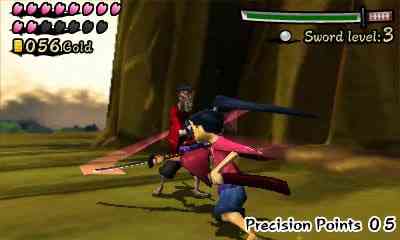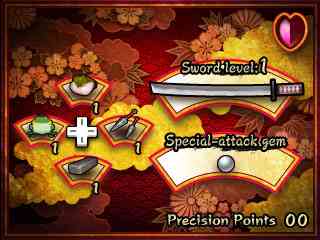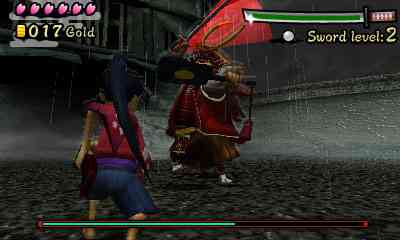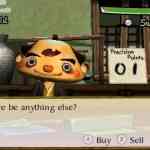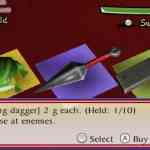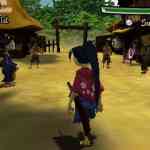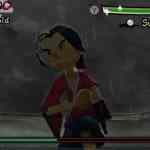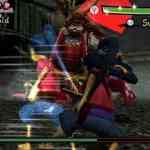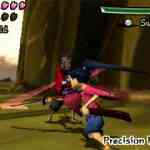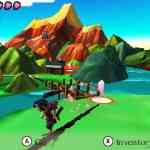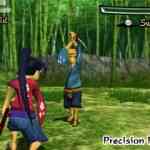When I was asked to review some “samurai game” for the Nintendo eShop by our Executive Editor, I was told it would suit me. I do not know how he knew it would suit me since I never told him about my mild interest in viewing cherry blossoms (sakura in Japanese) or about the samurai blood that courses through my veins (reportedly from a low ranking clan member way back and now thoroughly mixed with some down-to-earth farmer’s blood). He also did not know that I in fact enjoy watching Japanese swordplay and if combined with a good video game, it would probably look like Sakura Samurai: Art of the Sword (SS: AOTS).
SS: AOTS is a Nintendo aShop game developed and produced by Nintendo for the 3DS. You play the title character of the Sakura Samurai tasked with rescuing the Princess Cherry Blossom from various henchmen using your magically imbued sakura sword. You do so by following along a map and battling with the enemy along various checkpoints. Along the way, you collect coins and items by defeating your enemies including rice cakes that restore health; daggers to throw at your enemies; frogs to give your enemies the “willies” (and then strike them); and a whetstone to sharpen your blade when it becomes dull. In the towns you encounter, you may also upgrade your sword by the blacksmith to make it more powerful; stay at an inn to save your progress and restore your health; play mini-games for money or stamps (which you can then use to earn special items such as special moves); or cash in precision points, which will be explained later on.
When you enter a battle on a map, the screen switches from the map view to the battle screen. The multiple enemies you fight (often grouped in 3 or more but you fight them one at a time) are armed with swords, spears, bow and arrows, bombs or daggers and vary in the way they attack. For example, if the enemy has a spear and attacks you with a forward jabbing motion, then you must dodge to the side or you’ll be hit. If he swings across his body, then you must step back quickly. However, advanced enemies have multiple combinations of attacks and therefore require you to dodge multiple attacks until you see an opening to slash with your sword. This can get tricky if the attacker first stabs forward and then slashes across and then forward again, requiring the player to be patient and quick if he wishes to land a successful hit. After multiple successful strikes, your sword charges where you can unleash a special attack against the enemy, which can cause more damage or other effect (depending on the special weapon at hand).
The controls are fairly straightforward by you moving forward, back, left and right using the circle pad; slashing with the “A” button; and quickly dodging attacks using both the circle pad and the “B” button (back or left and right). If you are successful in dodging the enemy’s attack at the last moment, you are rewarded with a “precision point.” These precision points can later be sold in a shop where they keep track of the consecutive number of points you’ve acquired. On the other hand, if the enemy strikes you or your attack is blocked, you lose these precision points and are unable to sell them at a later date. Many of your attacks will follow your evasion of the enemy’s attack and if done correctly and quickly, you may strike the enemy multiple times.
One can see that unlike other action games where you could button mash the enemy, SS: AOTS rewards precision, fast reactions, good timing and the minimum force necessary to defeat your enemies, a value found in many martial arts. On the other hand, SS: AOTS will punish the player who uses mindless attacks by degrading your sword when it meets contact with the enemy’s guard, and losing precision points and being open to a counter attack. I enjoyed this style of game play as it requires a different type of skill set and holds some level of realism in that real sword duels, the reckless one may die faster. Japanese swordplay requires great skill and for those interested in watching modern Japanese sword fighting as a sport, I would suggest watching kendo matches online and you will likely appreciate how quick an actual sword match would have been.
In addition to the spirit of Japanese sword fighting, I immediately got a sense that the developers were quite familiar with feudal Japan as seen in the layouts of the battle environments including castle courtyards; the country side near a bamboo forest or along a mountain cliff. They also seem to be very familiar with the particular style of samurai warriors down to the detail of armour and weapons of your enemies.
The game also adds other aspects of Japanese culture with its inclusion of the mythical creature of the kappa and mini-games that involve cutting watermelons and fruit. While it may sound strange I include watermelon cutting as a Japanese cultural aspect and acknowledge cutting melons with a sword is not an inherently Japanese tradition, I do remember as a child during Japanese school sports day where we were blindfolded, made to spin around holding a bokken (a wooden Japanese sword) and guided verbally by others toward a watermelon on the ground in order to smash it (and then later eat it with everyone afterwards).
In regards to the graphics and style for SS: AOTS, I was impressed how it looked from the vibrant colours and was glad that it didn’t take itself too seriously as illustrated by the comical looking town characters and the lack of blood and gore. At times, SS: AOTA reminded me of The Legend of Zelda: Windwaker and Fruit Ninja in that it can appeal to a wide audience. The game is also compatible in 3D mode which makes it more of an engaging experience, particularly as objects come toward you like daggers or a cut scene where a sword is pointed directly toward the screen. Speaking of the cut scenes, they were reminiscent of action movies especially after the hero fights his way through hordes of enemies until he meets the final boss. I remember one particularly memorable scene where you enter a monastery and candles are burning around you and I thought to myself, “Yep, I’ve been somewhere like that before in Japan.” The setting made the fight with the giant boss that much more fun.
Adding to the mood of the game is the traditional Japanese music played in the game using various percussion, string and wind instruments which provide the right amount of drama especially in battle. The sounds effects are also quite effective and appear realistic but not over-the-top. There is no voice dialogue in the game, which was fine considering it’s not heavy on story or plot.
That being said, the game is not perfect and there were a couple of areas that would have helped this game to be better. Firstly, the game may be a little easy especially if you are patient and have good timing. Also, the in-town save points really makes it easy for anyone to keep re-playing the mini-games if you were to lose a lot of money. In other words, I may be able to lay down 250 gold to slice four watermelons and if I fail, I can just end the game and re-load it until I get it right (and double my money). Also, the more you play, the more “hearts” you receive which expands your lifespan similar to the Zelda series which is fine but can be a little over-kill (even though I died several times fighting the bosses which are a little tougher). In fact, much of this game seems to be inspired by the Zelda games with the exception that takes place in medieval Japan; it’s simpler in concept; and it’s more concentrated on fighting rather than puzzle solving. Then again, it is a Nintendo E-shop again so maybe I am expecting a little too much.
Another thing I noticed was that as the more towns you access across your map, the NPCs and the town layout are exactly the same except you have access to more items, different mini-games and able to upgrade your equipment to a higher degree. Personally, I don’t think it would have been incredibly difficult to add a little more variety to the game if they drew some different looking characters.
Finally, it’s also unfortunate that only one person can play this game at a time as there is only save slot. If someone wishes to start a new game, it erases any progress the other player may have made. While players have the option of re-playing particular battle points on the map, I think it would have been convenient to simply have another save slot available so more than one person could play.
Overall, Sakura Samurai: Art of the Sword for the 3DS was an enjoyable experience. The games visuals are simply a pleasure to look at and I enjoyed the emphasis on being smart and patient in combat. Additionally, the game provides players a chance to visually experience some aspects of Japanese history in the form of a handheld video game. While it could have stood to be a little different in some ways from other games in its genre and have a little more variety, Sakura Samurai: Art of the Sword managed to keep me interested and is a perfect little sword fighting game for gamers on the go.
